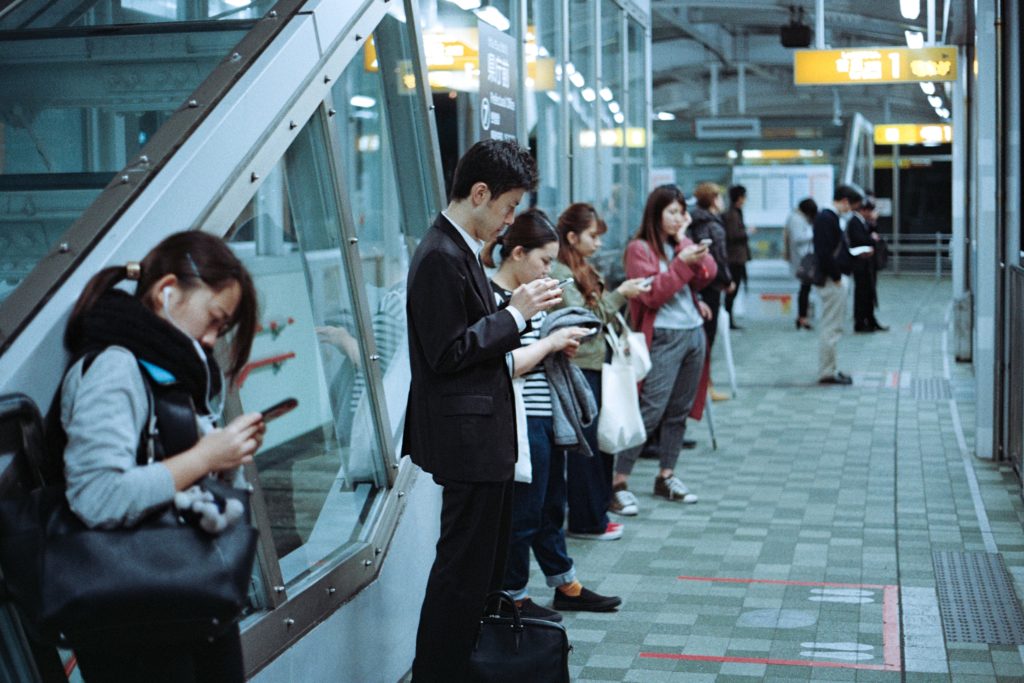What tech will evolve in the digital workplace?
With the evolution of the digital workplace, what tech should we expect to use in the not-so-distant future?

In 1962, Hanna-Barbera created the Jetsons, a cartoon TV show that predicted life in the 21st century – a place where flying cars and jet backs are de rigeur. And while the futuristic series was meant to be a whimsical look into the future for kids, the creators actually got a lot of things right – predicting devices and ways of working which are now part of modern living.
The Jetsons were prescient about quite a few things – flat screens, smart watches, robotic vacuum cleaners, and digital newspapers are now the norm. With digital technology, the show also accurately predicted how much more connected the home and workplace of the future would be.
Download the essential intranet guide today
The patriarch of the family, George Jetson, goes to work and is lambasted by his tyrannical boss, Cosmo Spacely, via a video chat. He gets all his knowledge via his computer and his secretary, Rosey the Robot, mirrors the virtual personal assistants that are inching closer to being a ubiquitous part of our lives.
So, as we head towards the first quarter of the new millennium, we look at the tech that will shape the digital workplace and is set to change the way we work.
Virtual personal assistants (VPAs): Cortana, Google, Alexa – at the moment, these are virtual assistants helping answer questions and helping owners control their smartphones. However, according to Rohit Prasad, vice president and head scientist of the Alexa division at Amazon, these tools are only “scratching the surface of what’s possible”.

With developments in speech recognition, natural language understanding and machine learning technologies, these VPAs are about to become a fundamental part of our lives, both at work and home.
Techs are applying transfer learning which allows Alexa et al to apply lessons learned from one skill to another, and even in different languages. As these devices live in the cloud, the more they are used and talked to, the smarter they become.
Download the essential intranet guide today
One proposal is to have these assistants as a social partner and be able to have conversations about current affairs just like human interaction. This form of artificial intelligence will undoubtedly have a massive impact – helping people develop new skills and assist with training and development, particularly in the workplace. Some VPAs, like Charlie, the Tim Berners-Lee project, will store all its own data meaning organizations could use them to hold all confidential financial information, personal data, and medical records.
Ambient knowledge: This is the algorithm-driven delivery of tailored information based on an employee’s activities and preferences. It also acts as an in-house expertise location service. Think about your Amazon or Netflix account, who use ambient knowledge to provide suggestions of products or based on your past purchases or viewings.
While it has its obvious uses in a consumer market, what is its role in business? Ambient knowledge integration can deliver a better workplace experience, allowing information to be delivered to suit your personal preferences and online behavior.
This will make content creation, reports, and presentations easier to produce via the algorithm-driven delivery of customized information. This leveraging of vast amounts of information has the potential to solve a lot of business problems.

Embedded analytics: It’s all about data and businesses will soon be able to access rich dashboards thanks to analytical tools which analyze data and share insights. These analytical tools accelerate business processes and sharpen competition.
They also help us improve user experiences, increase end-user adoption while decreasing the complexity of the use of application sprawl. Compared to using stand-alone data discovery tools, embedded data increases the time spent in applications, adds value and appeals to a wider audience.
According to Information Age, almost 90% of UK and US application decision makers are planning on investing in embedded analytics in the next 12 months, updating their applications to offer customers of all types sleek integrated services that omit any need for them to switch screens to access analytics.
Production studio technology: It is now far easier to package and deliver content to a professional standard. Going beyond Microsoft PowerPoint, employees are now able to use a variety of other products, Prezi for example, to deliver presentations.

The level of accessible tech now enables employees to be empowered to be creative in problem-solving. Videos can be created by people unskilled in video production, graphics can be made by workers outside of a design team and podcasts can be recorded and broadcasted via a smartphone to anyone in the world.
Bürolandschaft: This is the term that describes the role of the physical office in the digital workplace. It was created to describe the removal of areas like typing pools to more open plan offices of the 60s. This then transformed into a network of cubicles in the 80s and 90s and the creative “ball pool and bean bags” spaces of the 00s.
However, unlike George Jetson, commuting to the office will become less and less of a necessity as tech paves the way for easier remote working. While the digital workplace enables people to essentially work from anywhere, there will still a requirement for some type of office space.

The concepts behind bürolandschaft are to break down literal and figurative barriers, promote a greater sense of freedom and encourage collaboration and communication. These are all key aspects of smart workspaces, which implement video conferencing, knowledge and project management software as well as workplace management systems which contribute to an agile workspace which reflects the needs of the changing workforce as a mobile, collaborative and flexible employees
Download the essential intranet guide today
Personal clouds: While many businesses have battled with employees using personal apps, there is now more of a drive to sanction these apps but manage them securely in order to prevent them from posing a security threat.
While businesses have traditionally railed against the use of personal applications in the workplace, many of these consumer-facing apps are used to ease tasks and a simpler alternative to company-approved products.
However, the digital workplace sees a union between the personal and business clouds without the breaching of company policy. This way, rather than lock down on all devices and apps, IT can support the services workers need to get their job done, increasing workplace satisfaction and productivity. This is all done via shared security frameworks which can cover the whole app ecosystem, rather than a select few.
Micro-Learning: Businesses have always struggled with training employees. Those that do provide this type of development do it at a significant cost to the company, covering training fees, time away from the office and travel. However, with micro-learning, you can offer formal and informal training through the digital workplace in the form of quizzes, videos and multiple-choice sessions delivered via text, email or through the intranet.

This allows training to be readily available wherever the employee is, and therefore more accessible for the uptake.
Download the essential intranet guide today
Silo busters: The modern workplace is focusing on departmental boundaries far less. In fact, encouraging the removal of these barriers has paved the way for silo-busting tools which enable employees across the workforce to communicate and collaborate with each other. Enterprise social networks play a big part here; applications like Yammer and Skype are built for cross-organization communication, as well as having a social intranet. These products can create groups within an organization.
Other tools like instant messaging and video conferencing are another way of enabling workers to reach out to colleagues across the company. This can foster stronger interpersonal relationships.
The digital workplace is somewhere that will continually evolve as new technology and business processes develop. As employees are helped in becoming more engaged and productive, the impact on business will be evident.

